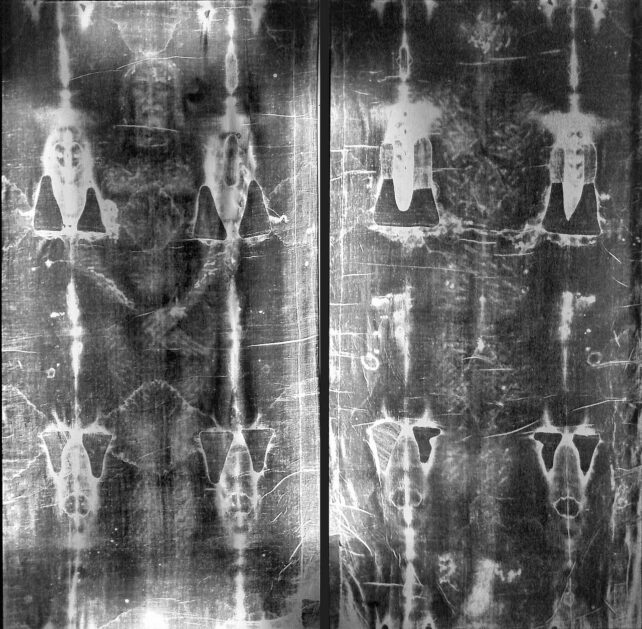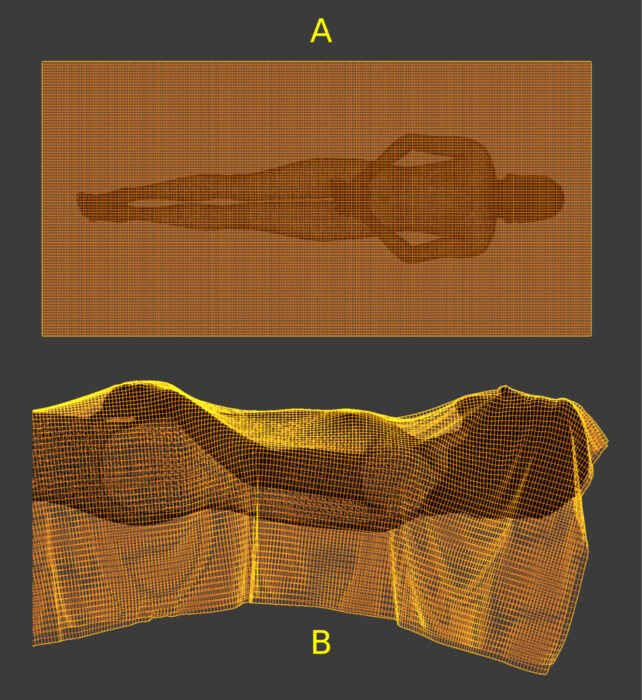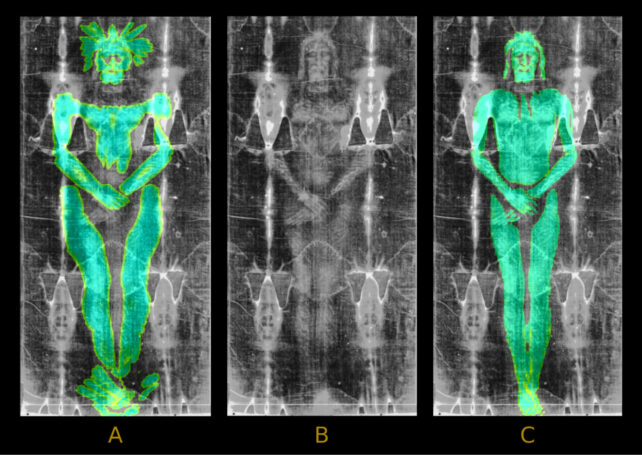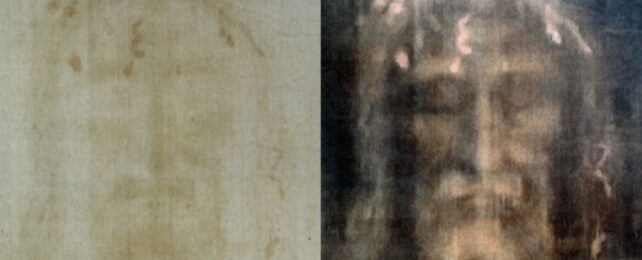The Shroud of Turin is shrouded in mystery. Viewed as a holy relic for centuries, this artifact is not what it looks like, according to yet another study.
The old linen cloth and its faint spectral image of a man, which resembles traditional depictions of Jesus, were first documented in France in 1354, and yet to this day, no one knows who the imprint depicts, or how it was made.
Some Christians believe this is the very sheet that wrapped around the body of Jesus Christ after he died (although the Catholic Church neither endorses nor rejects the idea). Skeptics believe it is either a work of art or a forgery.
Though the controversial relic bears the faint impression of a naked adult male with long hair and a beard, Brazilian 3D designer and researcher Cícero Moraes argues the image is not the likeness of a real human.
Related: AI Detects an Unusual Detail Hidden in a Famous Raphael Masterpiece
Moraes' work supports a hypothesis, first put forward in 1978, which argues that the Shroud's image is art. Under this hypothesis, the image was probably made by placing a sheet on top of a low-relief sculpture, slightly raised from the background. Then, the linen was rubbed with pigment or browned somehow.

Moraes is a self-taught specialist in historical facial reconstruction, which means he's adept at comparing 2D and 3D imagery. When he first took a look at the rigid and straight shapes of the Shroud's body, he found it somewhat incompatible with real anatomy. The deformation of the cloth didn't look as though it had been wrapped around an actual human body.
Instead, Moraes thought it might be a painting on the fabric, or a low-relief print.
To test that idea, he recreated both options.
Using open-source, free software, Moraes compared how a sheet that was wrapped around a 3D model of a human body would look compared to a sheet laid on top of a low relief sculpture.

In the case of the 3D model representing an authentic human body, the imprint of the figure looked wider and more stretched out than the Holy Shroud when the sheet was laid flat.
This is called the Agamemnon Mask effect, because of a gold funerary mask from Ancient Greece that was first moulded to a face and then rolled flat. It shows slightly distorted features as a result.

"The printed image, generated from the contact regions in low relief, shows high compatibility with that present on the Shroud of Turin, significantly corresponding to its contours, even considering a not-entirely flat base," concludes Moraes.
His analysis of the shroud provides evidence that this is not an impression of anybody (let alone Jesus Christ), while avoiding a recent academic debate on the artifact's age.
Some carbon dating attempts indicate that the shroud was made in Medieval times, but a recent controversial study dates it closer to the first century AD.
Like Moraes, other researchers have noticed the shroud is not structurally deformed as would be expected by a 3D body. But the details are very faint and heated academic debates continue over how exactly the image was made.
"Using the free and open-source tools described, anyone with such knowledge can recreate the fabric dynamics and contact mapping simulations, exploring the presented scenarios," says Moraes.
This work, Moraes concludes, "highlights the potential of digital technologies to address or unravel historical mysteries, intertwining science, art, and technology in a collaborative and reflective search for answers."
The study was published in Archaeometry.
